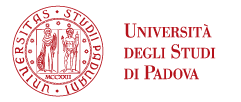Erasmus Mundus Fusion doctoral college
A successful Erasmus Mundus proposal was submitted in 2012.
The consortium consists of 7 universities and 2 research institutes as full partners, 20 European associated partners and 14 non-European partners (including all ITER partners, except Korea).
The 7 universities are:
- Ghent University, Belgium (coordinator)
- Université de Lorraine, France
- Universidad Complutense de Madrid, Spain
- Universidad Carlos III de Madrid, Spain
- Universität Stuttgart, Germany
- Università degli Studi di Padova, Italy
- Instituto Superior Técnico, Portugal
The 2 research institutes are:
- Institut de Recherche sur la Fusion par confinement magnétique, Saint-Paul-lez-Durance, France
- Max-Planck-Institut für Plasmaphysik, Garching und Greifswald, Germany
The management is provided by a steering committee advised by a scientific board and a strategic advisory board. A logistic structure has been set up to gather European-wide interesting thesis proposals, which have to be submitted in a cooperation of at least two universities. These universities will grant a double-degree. The co-tutelle is an essential requirement of the Erasmus Mundus funding. Thesis topics in addition usually involve one or more research institution.
The topics are evaluated by the high level scientific board. Based on this evaluation a number of thesis proposals is selected and put on a dedicated website for 3 month. Students can apply for up to 3 thesis topics. The students are evaluated, and the top students granted a fellowship.
The number of Ph.D. fellowship funded by Erasmus Mundus was respectively from 2012 to 2016, and each funded for 3 years: 9, 9, 6, 5 and 5.
The selection of the students for those Erasmus Mundus fellowships do carry some restrictions, for example, that not more than 2 students can have the same nationality, or some fellowships are earmarked for students specifically from outside or inside of Europe or from some specific countries.
Selected students can also be funded through other channels than Erasmus Mundus. Some partners are eager to tap into the list of selected students to provide them with a fellowship. These may or may not carry restrictions.
The total number of students selected in this way and starting with a fellowship each year from 2012 to 2016 has been: 13, 10, 9, 10 and 7.
